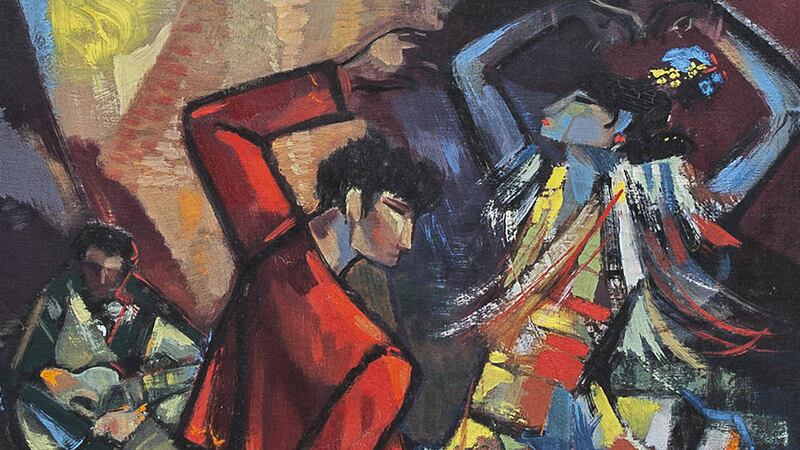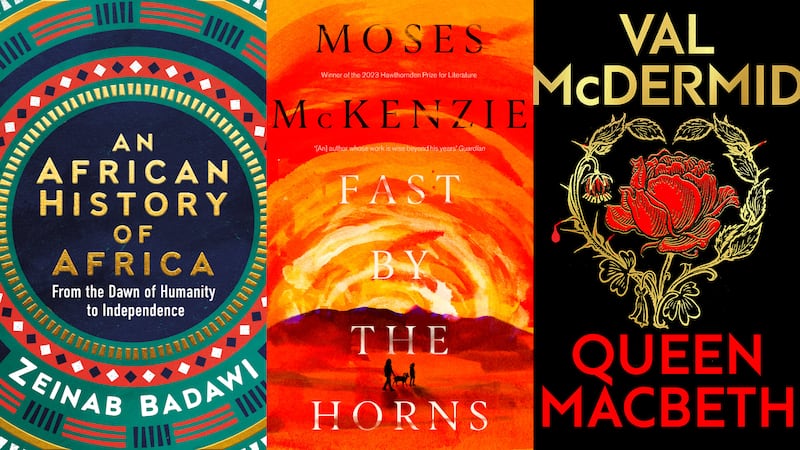TWO years ago, independent art consultant Karen Reihill curated a major loan-based retrospective of west Belfast artist Gerard Dillon.
As its title implies, Gerard Dillon, Art & Friendships at Adam's gallery in Dublin and The Ava Gallery at Clandeboye Estate highlighted the output of the late, self-taught Falls Road painter and his close-knit group of similarly untrained contemporaries such as fellow Belfast artist Daniel O'Neill, Arthur Armstrong from Carrickfergus and Dublin-born George Campbell.
A pro-active, self-organising group, the so-called 'Belfast boys' dominated the anti-establishment Irish Exhibitions of Living Art (IELA) events in the post Second World War era, effectively igniting an avant garde arts scene in their home city while also causing a stir in Dublin, London and further afield.
However, by the late 1960s, the art world had begun to move on: the groups' work was now frequently being labelled 'old fashioned' by a new wave of critics and dealers.
While Gerard Dillon's reputation weathered the trends since his death in 1971, his close friend George Campbell – an abstract 'quasi-cubist' painter with whom Dillon shared his love of the west of Ireland, ancient Irish monuments, music, literature and theatre – has become largely unsung in his native land, despite the fact Campbell continued to enjoy considerable commercial success here and in his adopted home of Spain right up to his sudden death from a brain haemorrhage in 1979, aged 62.
Having helped 'fill in the blanks' in Gerard Dillon's story with her previous retrospective and its meticulously researched exhibition programme, Dublin-based Karen Reihill has now turned her attention to Campbell and the other 'Belfast boys' (also including Colin Middleton, James MacIntyre and John Turner) who have been neglected since helping to make the post-war years such an exciting, vibrant time for new art in the north.
"They're a very interesting group," comments Reihill, who has painstakingly brought together the largest ever exhibition of the travel and flamenco guitar-loving Campbell's work for the event.
"In fairness, they are still very popular in the north of Ireland – and deservedly so. But, for some reason, it's a different story in the south.
"I was very surprised that I had trouble drumming up a bit of interest in George Campbell, who was very, very popular in the 1960s.
"Gerard is just a household name in the south, I mean everyone adores his work. When I was researching George, I had to keep explaining that he was actually the one who won all the prizes and was getting all the commissions."
Indeed, Campbell was the first avant garde painter to be accepted by the Royal Hibernian Academy (the very institution he helped establish IELA as an alternative to), going on to win the Douglas Hyde Gold Medal in 1966 and the Oireachtas Prize for Landscape three years later.
Campbell also landed commissions including a mural for the Irish Life Assurance building in Dublin and to create artwork for RTE and the Catholic Church, including the design for stained glass windows at Galway Cathedral, thus maintaining an enviable rate of income to support himself and his devoted wife, Madge, who saw him declared a Knight Commander of Spain in 1978.
"One of George's oldest friends suggested to me that the reason Gerard is more popular is that George's paintings are much darker," reveals Reihill. "The colours in Gerard's work have endured over time and maintained their vibrancy.
"Gerry was also just a much more personable guy. George had a lot of issues during the last decade of his life, which is something I tried to explain in my mammoth essay for the exhibition."
Indeed, Reihill's detailed programme notes – available as a free download from Adams.ie – note the health problems that began to trouble the extrovert, often fiery-tempered Campbell as he outlived his dear artist friends (it is suggested that he never quite got over Dillon's death), while also doing an excellent job of interweaving the stories and careers of each of the various group 'members'.
However, even at a hefty 170 pages, there wasn't room for every anecdote – though you might get to hear a bonus gem or three if you manage to buttonhole the exhibition curator in person.
"Somebody did tell me a great story about Gerry, Arthur and George when they were living in London," Reihill reveals.
"Every weekend, they would go out to hang their paintings on the railings of Hampstead Heath or Hyde Park. Somehow they came up with the idea – and I've a feeling this was one of George Campbell's – that one of them would stand in front of the other's work and start insulting it.
"The plan was that people would hear this commotion and stop to find out what all the rumpus was about, which of course was just a way to get them to look at the paintings.
"If any of them sold one of their paintings, they would divide up the money between them. I thought that was an amazing story that shows the bond that existed between these guys."
When you delve into the story of the 'Belfast boys' and the impact they made on a stagnant Irish art scene, it seems remarkable that the group have not been more regularly celebrated: although there was a 2002 George Campbell retrospective in his beloved Malaga (where he also has a roundabout named after him, somewhat incongruously), the last major celebration of his work in Ireland was in 1992.
Likewise, Daniel O'Neill and Arthur Armstrong have never been honoured with retrospectives since their deaths – something Reihill hopes to change in the near future.
"Dan O'Neill is definitely my next project," she enthuses, "but from the research I've already done, it looks as though there's very little material on him out there.
"I'm going to be knocking on every door just to try and get little bits of his puzzle, but so far it's been a very exciting and enjoyable quest."
As visitors to the new exhibition will discover, these 'Belfast boys' couldn't have found a more dedicated and passionate modern day champion.
:: George Campbell and The Belfast Boys is at Adam's gallery, St Stephen's Green, Dublin from July 27 – 30 and from August 6 – September 3 at Ava Gallery, Clandeboye Estate, Bangor. Admission is free.




